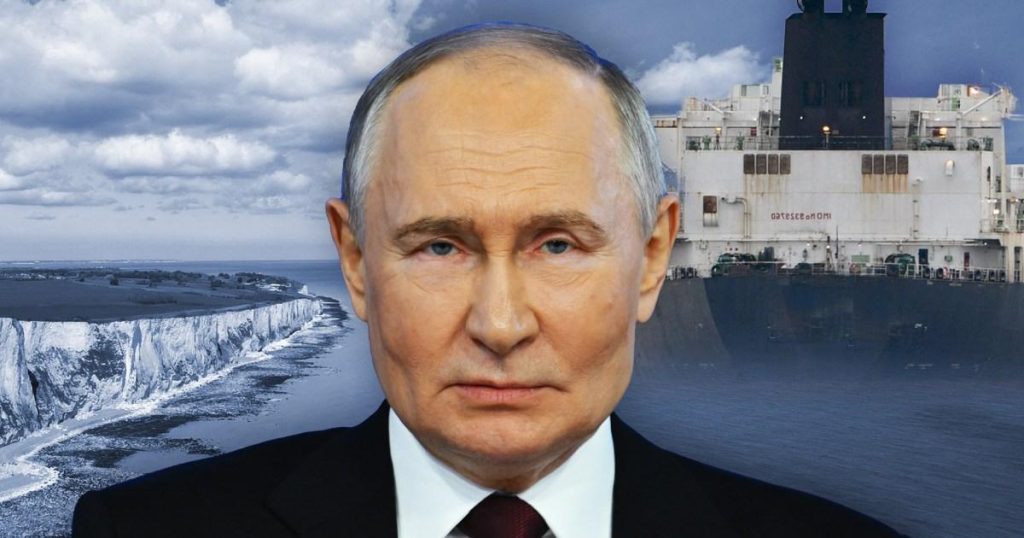The Looming Threat of Russia’s Shadow Fleet: A Maritime Disaster Waiting to Happen
The specter of a major maritime disaster hangs heavy over international waters, courtesy of Russia’s "shadow fleet" – a collection of aging oil tankers operating in the shadows to circumvent sanctions imposed after the invasion of Ukraine. These vessels, often characterized by convoluted ownership structures and a disregard for maritime safety standards, pose a significant threat to the environment and coastal communities. Members of the UK Parliament have voiced their concerns, urging Foreign Secretary David Lammy to take decisive action against this "ticking time bomb." They propose the establishment of "shadow-free" zones within British territorial waters as a protective measure against potential catastrophes.
The risks associated with Russia’s shadow fleet are multi-faceted. An investigation by the Kyiv School of Economics Institute (KSE) revealed that Russia deliberately acquired older, less expensive vessels to build this fleet, often overlooking vital safety regulations. The KSE’s stark warning – that a maritime disaster involving these ships is not a matter of "if" but "when" – underscores the urgency of the situation. Near misses, such as a collision involving a 15-year-old Russian tanker in Denmark, highlight the precarious nature of these vessels. Many of them exceed the industry standard age limit of 15 years, making them more susceptible to mechanical failures and increasing the likelihood of accidents.
Furthermore, the lack of proper insurance coverage for these vessels exacerbates the potential consequences of a spill. Should an oil tanker experience a spill, the financial burden of cleanup would fall upon the country where the incident occurs, potentially leading to significant economic and environmental damage. The potential for an environmental catastrophe on the scale of the Exxon Valdez spill looms large, particularly given the frequency with which these shadow tankers traverse busy shipping lanes like the English Channel, with an estimated ten such vessels passing through daily. The concentration of these aging, poorly maintained ships in such heavily trafficked areas significantly heightens the risk of a major incident.
The call for "shadow-free" zones in UK waters, advocated by MPs like Uma Kumaran and Tim Roca, reflects the growing concern over the imminent threat posed by these vessels. Such zones would effectively prohibit the entry of shadow tankers into designated areas, providing a buffer for vulnerable coastlines and marine ecosystems. While the UK government has already implemented sanctions against the Russian shadow fleet, the creation of these zones would represent a more proactive approach to safeguarding British waters and setting a precedent for other nations to follow.
The incident involving the Eagle S, a Russian oil tanker detained by Finnish authorities in December, serves as a stark reminder of the clandestine nature of these operations. Finnish officials suspected the vessel, flagged in the Cook Islands, of being part of Russia’s shadow fleet. This incident underscores the lengths to which Russia is willing to go to circumvent sanctions and the importance of heightened vigilance in monitoring the movements of these vessels. The incident further highlights the international nature of the problem and the need for coordinated action among nations to effectively address the risks posed by the shadow fleet.
The establishment of shadow-free zones is presented not only as a protective measure but also as a symbolic gesture, setting a "global precedent for responsible shipping practices." By taking a firm stance against these substandard vessels, the UK could encourage other nations to adopt similar measures, fostering a more accountable and safer maritime environment. The long-term consequences of inaction are dire, with the potential for devastating environmental damage and economic disruption. The international community must recognize the urgency of this situation and take decisive action to mitigate the risks associated with Russia’s shadow fleet before a catastrophic incident occurs.




